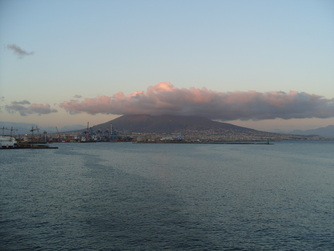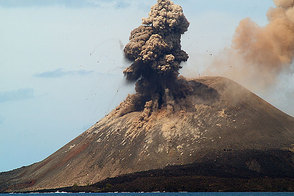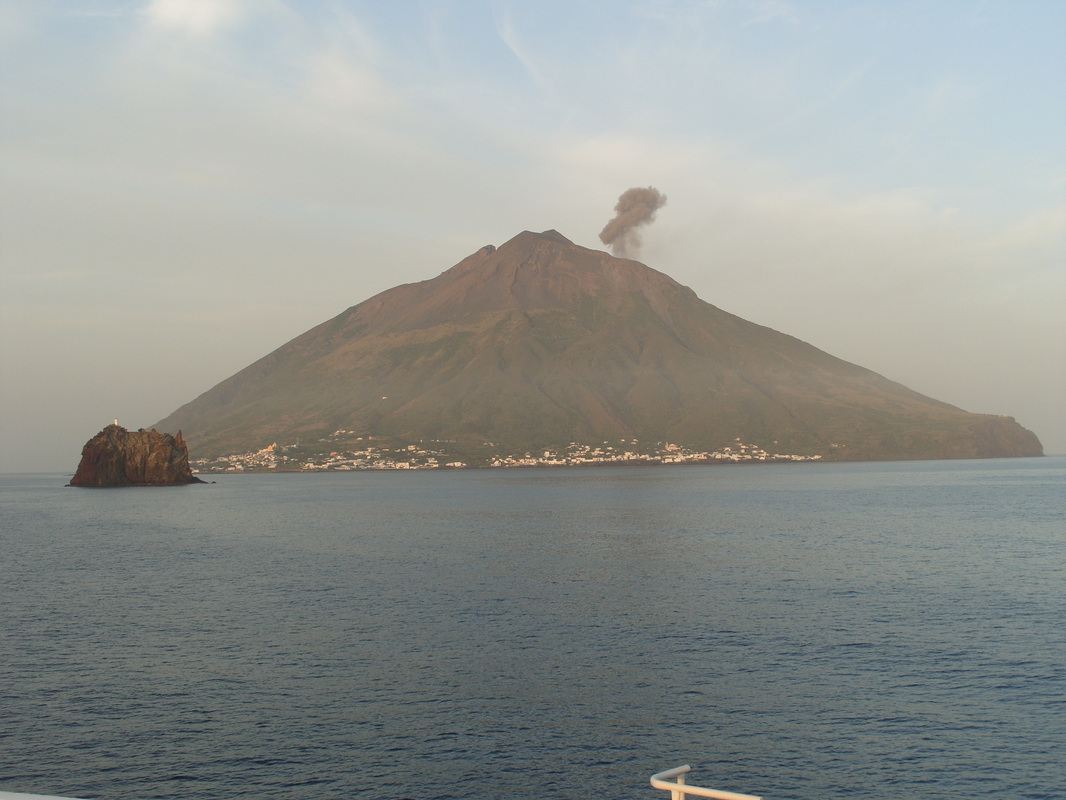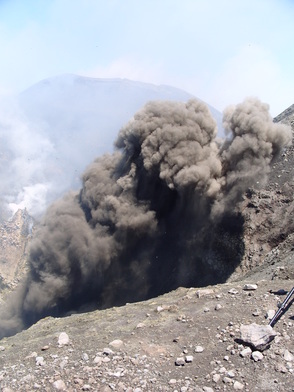 A benefit of my PhD, travelling to amazing places! This particularly trip was for a field school on Stromboli, so expect a few posts on the lovely volcanic island! Particularly during the early summer and winter periods, getting to Stromboli can be a long experience... I chose the overnight ferry from Naples (Napoli) after flying in from London to the airport during the day. Getting to the port was easier than expected (I even prepared to walk the ~6 km just in case!). Immediately I was struck by how close Vesuvius (Vesuvio) was to Naples and how it has been allowed to spread so far up the flanks, which must surely be a nightmare for the local government to manage! On the overnight boat there is an excellent view of Naples and Vesuvius, unfortunately covered by cloud at the summit, it is certainly impressive in its commanding position. When catching the overnight ferry from Naples I would highly recommend that you get a cabin (I didn’t....), these boats are very very basic! Getting up at around 5 am (local time) to see Stromboli in the morning sun (and of course the volcanic activity) is scenic and very hard to capture on camera. An attempt of mine is below, including a nice ash rich explosion which occurred close to docking. The smaller rock on the left of the pictures is Strombolicchio which is the remaining part of the volcanic conduit of the older edifice that lies to the NE of the current summit area. Travelling overnight and arriving at Stromboli during the early hours was very rewarding, despite the early hours and somewhat basic boat, it is certainly something everyone should do, once maybe, it is much quicker to travel via Hydrofoil from Milazzo/Lipari but that's a story for another blog post!  Click for link to original site. Photo is Anak Krakatau Vulcanian eruptions, generally considered as the next step up in explosiveness from Hawaiian eruptions, are very distinct from other forms of activity such as Strombolian as they are related to the emission of mostly ashy pyroclasts and blocks in more voluminous amounts. This is in direct contrast to the incandescent material ejected during Hawaiian and Strombolian events. These events can occur on time-scales of minutes to hours or more. They are generally thought to be caused by the build-up of gas below a cooler plug of material which builds up sufficient amounts of pressure to explosively force the plug of material from the conduit. This then creates a column between hundreds of metres and kilometres high filled with ash and can also lead to the ejection of large metre size blocks. Typically this type of eruption occurs with higher viscosity magmas which don't allow the rapid rise and expansion of bubbles (and hence allow large amounts of passive degassing). This then allows the upper conduit to cool. Of course there are always exceptions and different situations when considering volcanic eruptions! Where do Vulcanian eruptions they get their name from? No surprises here when I tell you it is from the Volcano Vulcano, one of the Aeolian Island volcanoes which has most commonly exhibits this kind of activity. There are several great textbooks with more information on this type of activity - Volcanoes by Lockwood and Hazlett and of course Volcanoes by Francis and Oppenheimer. I am sure there are more! |
Archives
July 2023
|



 RSS Feed
RSS Feed